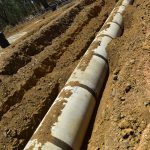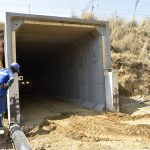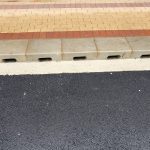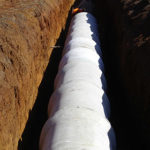With water shortages and the longer-term security of water supply being a serious concern for South Africans, one would think that every business, school and home would have a rainwater harvesting system. Justin Kretzmar, Sales Engineer at Rocla and Technicrete, explains why this is sometimes not the case.
“When constructing new commercial, residential and public buildings, a rainwater harvesting system is one of the last elements to install. At this stage, many projects are either over budget or have run out of money completely, and so the idea is often abandoned or a cheaper, shorter life span option adopted.
“Another reason is that rainwater harvesting systems are still being underquoted in South Africa at tender phase. If the requirement is for 50,000 litres of harvesting, we often note at a later stage that 10 of 5,000 litre plastic, above ground, storage tanks have been used as the pricing guideline. Consideration might not have been given to the site plans and hence an understanding as to where the engineers envisaged these tanks to be placed. On sites where the tanks are designed to be placed below ground, due to durability, overall size and/or space requirements, the plastic guideline pricing can be out by a factor of 10 or even 20 once you include below ground installation work.
Mr Kretzmar maintains that rainwater harvesting is also sometimes viewed as a nice-to-have as opposed to a necessity and hence gets dropped at the final stages due to updated overall cost implications.
“There is little financial incentive, and no legislation that forbids the use of potable water when non potable water could be used. However, with parts of our country either suffering from drought, or experiencing water shortages and restrictions, there has been an increased interest in residential rainwater harvesting. Unfortunately, many people only consider rainwater harvesting in times of drought, which of course, is too late. There has to be rain to fill the tanks and we hence, need to embrace a longer-term philosophy.” says Kretzmar.
Product offering
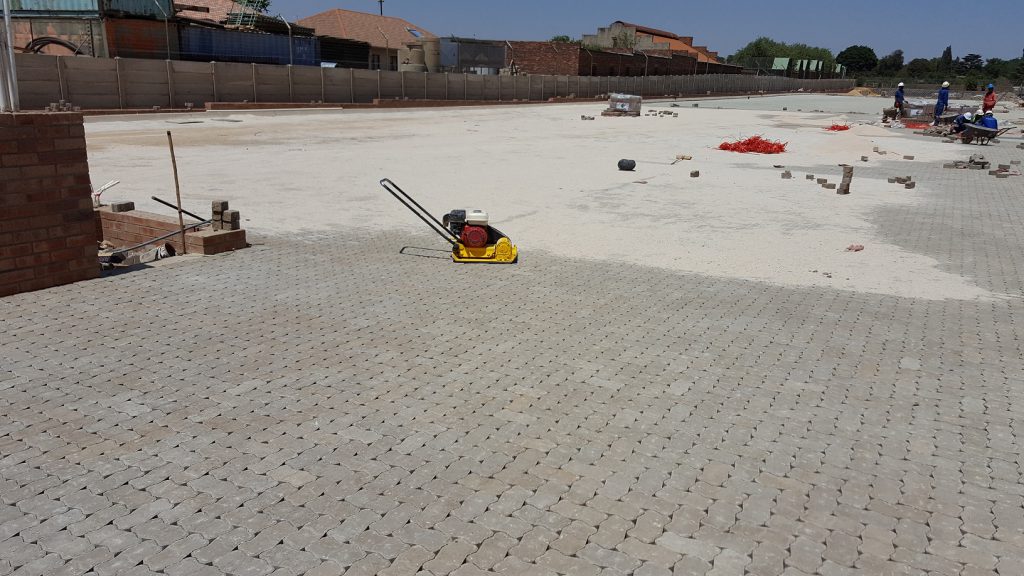
Technicrete and Rocla, part of the Infrastructure Specialist Group, both offer different water harvesting friendly options that can be used independently or combined for a holistic solution. These include permeable paving solutions to capture surface water and below ground concrete collection tank systems for roof water capture.
Rocla offers two concrete rainwater harvesting solutions that are both installed underground:
- A (smaller) modular system, made up of 6,000 litre units that can accommodate storage requirements from about 24KL up to hundreds of thousands of litres.
- A (larger) modular made up of 60KL rectangular tanks. These are more cost effective than the smaller modular option but installations must be increments of 60,000 litres.
Below ground concrete tanks are considerably more hygienic when compared to above ground plastic alternatives due to the naturally cool and dark environment where most micro-organisms cannot survive. Being underground and out of site, vandalism is reduced and as they are not exposed to sunlight, problems associated with UV reducing overall lifespan are alleviated.
Technicrete’s Aqua range of permeable paving products subscribe to a methodology whereby vertical ‘slots’ between adjacent pavers provide drainage channels allowing storm water to flow from surface, through the paving and bedding layers, into suitably designed stone layer works below. This stone layer becomes the storage ‘tank’ with the captured water replacing air cavities between adjacent stones. It is interesting to note that these air cavities can be up to 40% of the overall volume of this layer, or 40 litres of water stored per square meter in every 100mm thick stone layer. Whilst permeable paving is most frequently used as a water attenuation facility, it can also be used for rainwater harvesting, by placing an impervious membrane at the base of the layer works, capturing the water instead of infiltrating it. This water would typically be used for reuse in greywater and irrigation systems.
Potential problems
“While permeable paving technology has been around for well over 40 years (locally for over 20 years), some engineers are still hesitant to make use of this option. Permeable paving can and does fail when it has been designed or installed incorrectly or has been placed in unsuitable locations,” says Kretzmar.
For instance, one should probably not use permeable paving in places where there is a lot of fine dust and pollution that can be expected to blow over an area on a regular basis. As such, there is justifiable concern about the long-term clogging of permeable paving. With the finest material at the top, grading to larger stones at the bottom, clogging occurs when tiny particles being transported by storm water get caught by the smaller gravel at the top of the pavement layers and hence reduce the filtration capacity through the paving layer. This reduces the filtration capacity through the paving layer and the functionality of permeable paving.
Other causes of failure include design and installation shortcomings where the permeable layer must contend with more surface water than it can physically process. One should ensure there is a limit to a ratio of 2:1 ratio of impermeable to permeable layering. Furthermore, contractors often do not follow correct installation instructions with regards to contamination and compaction.
“Maintenance and cleaning of permeable paving is therefore very important. Maintenance should include annual sweeping of the paved area, prior to the rainy season as this will remove most of the silt that has settled onto the area over the dry season – therefore avoiding contamination at the top grit layer. Typical cleaning regimens should be carried out every five to ten years or as and when as system is no longer functioning as required. A high pressure spray will loosen the upper 25mm of clogged, polluted gravel/grit, followed by a high strength vacuum to remove this material. The fine grit layer between pavers must then be reinstated with new, clean and washed material.” adds Kretzmar.
Kretzmar concludes that rainwater harvesting tanks and permeable paving have been used very successfully internationally and moderately so in South Africa, “However, both systems have been very successful in other countries, especially where the requirement has been driven by local legislation and municipalities.”
Source: Water & Sanitation Africa Mar/April 2021


